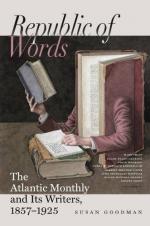The beam of polarized light was also found to have the peculiar property of penetrating into the molecules of bodies, illuminating them and, enabling the eye to determine as to their structure. The production of beautiful spectres, prismatic colors of gorgeous hues, and the most remarkable system of rings, has followed the discovery, and important results are expected from the continuation of the researches. It has already enabled the astronomer to determine what heavenly bodies do or do not shine with their own light. The subject is still under investigation.
* * * * *
Color from light comes also under the notice of the meteorologist. The received opinion is, that there is no inherent color in any object we look at, but that it is in the light itself which falls upon and is reflected from the object. Each object, having a particular reflecting surface of its own, throws back light at its own angle, absorbing some rays and dispersing others, while it preserves its own. In this sense it may be said that the rose has no color,—its hues are only borrowed. If the idea should be carried out, it would certainly destroy much of the poetry of color. Thus, in praising the modest blush which crimsons the cheek of beauty, we should destroy all its charm, if we attributed it to a sudden change in the reflecting surface of the epidermis,—a mere mechanical rushing of blood to the skin, and a corresponding change in its angle of reflection!
Without light, however, there is no color. Agriculturists and chemists understand this. Plants without light retain their oxygen, which bleaches them.
The theory of color has never been fully agreed upon. Some writers maintain that the character of its hues depends on the number of undulations of a ray. Goethe’s theory is substantially, that colors are produced by the thinning or thickening and obstructing of light. Brewster contends that there are but three primary colors,—red, yellow, and blue. Wollaston finds four,—red, yellowish green, blue, and violet. But this, as well as the consideration of the solar spectrum of Newton, is more the specialty of Optics. The atmospheric relations of color are more apposite to our purpose.
The color of the clouds, which may be occasionally affected by electricity, is owing to the state of the atmosphere and its reflecting and refracting properties.
The color of snow is white because it is composed of an infinite variety of crystals, which reflect all the colors of light, absorbing none, and these, uniting before they reach the eye, appear white, which is the combination of all the colors.
Wind, the atmosphere in action, though not picturesque, is always wonderful, often terrible and sublime. The origin of wind, its direction and its force, its influence on the health of man, his business, his dwelling-place, and the climate where he perpetuates his race, have attracted the profound attention of the greatest philosophers.




